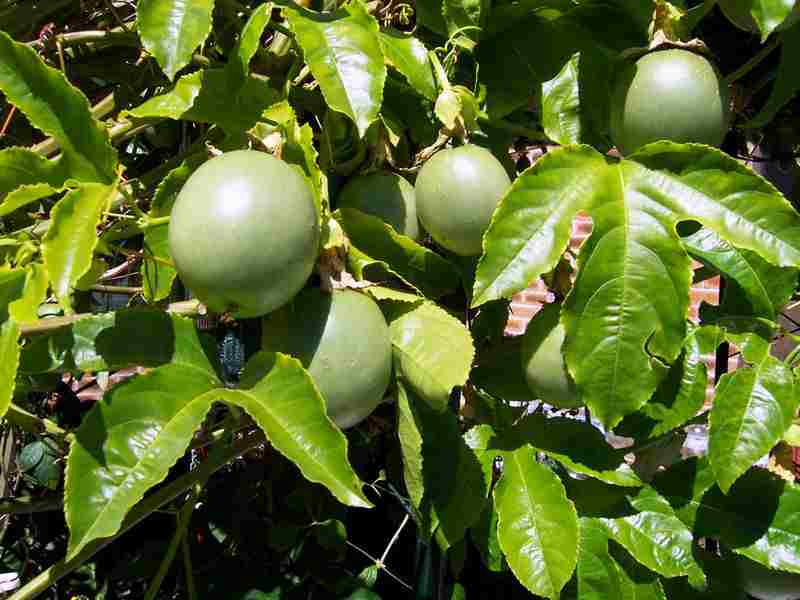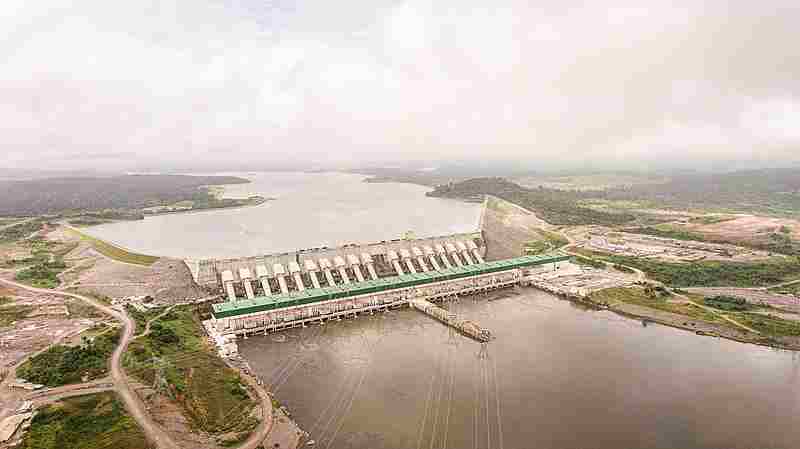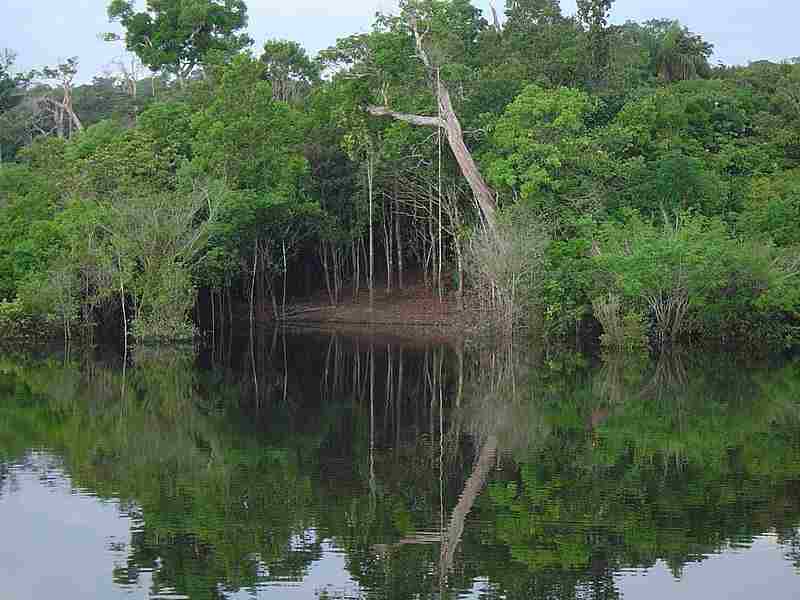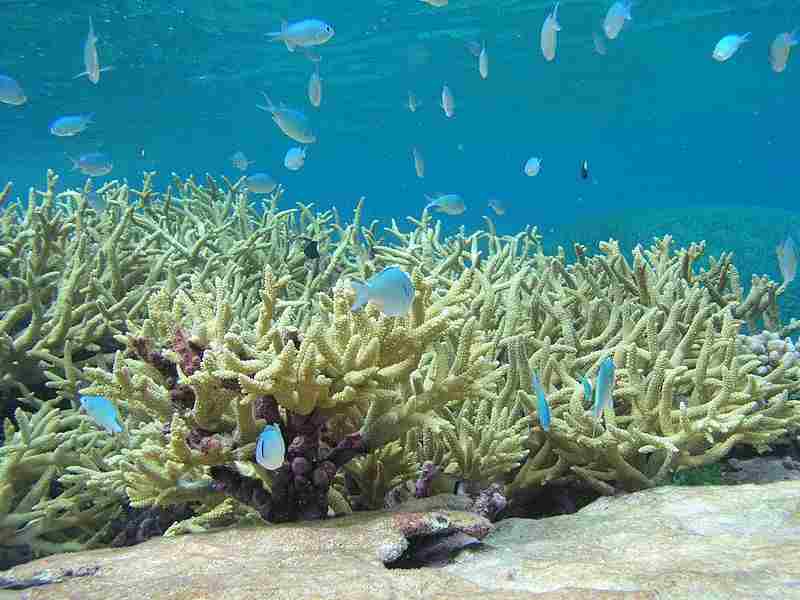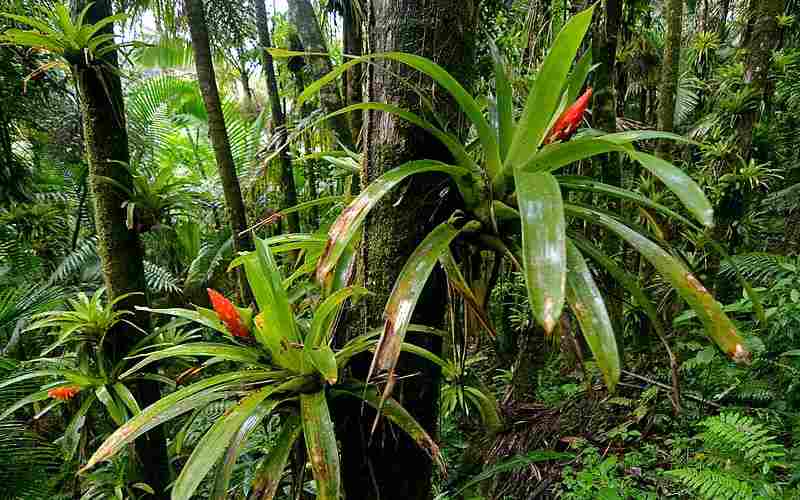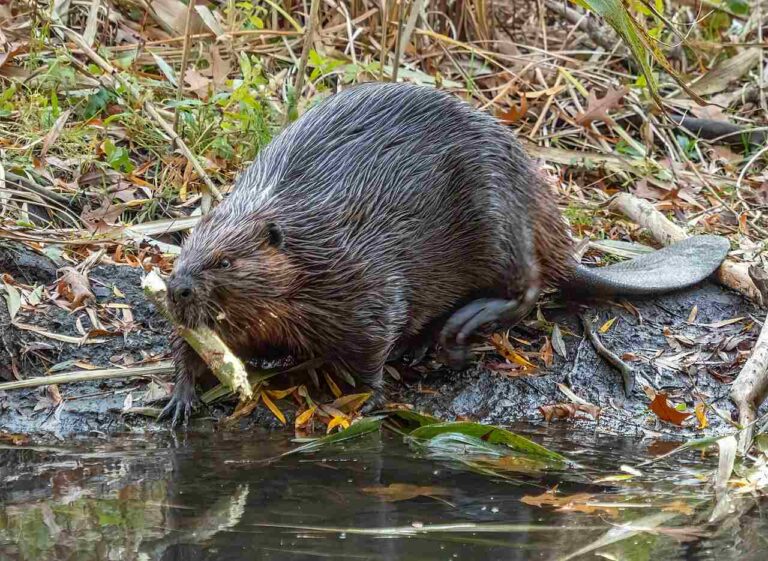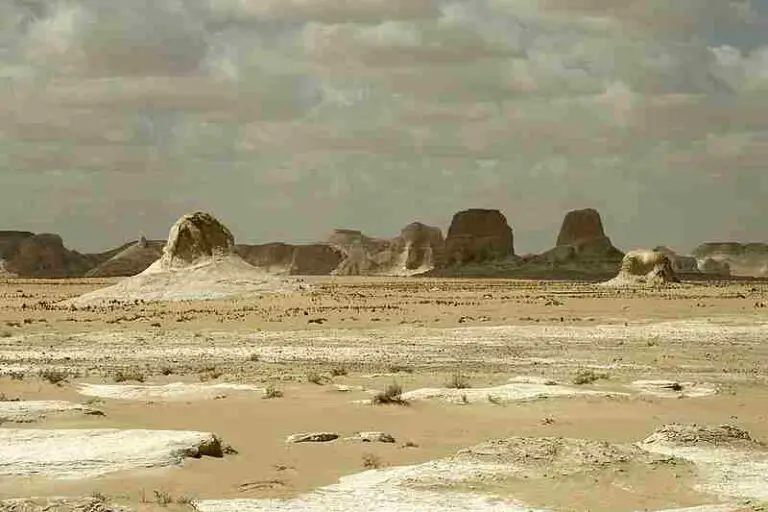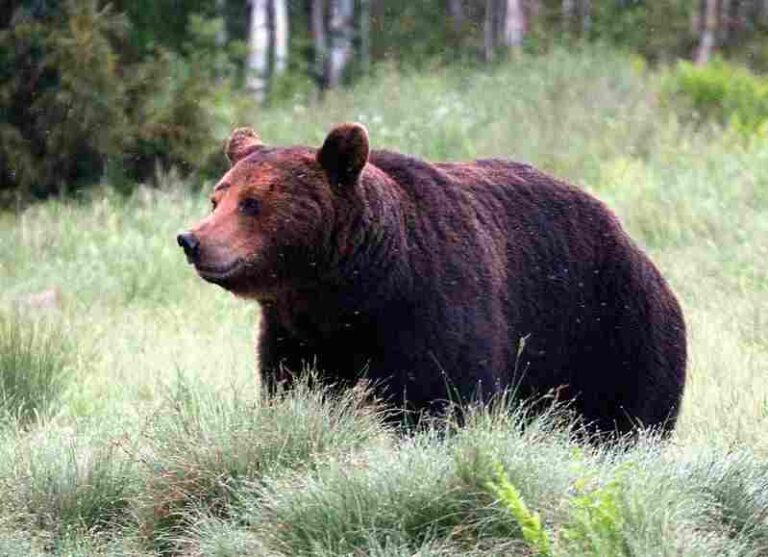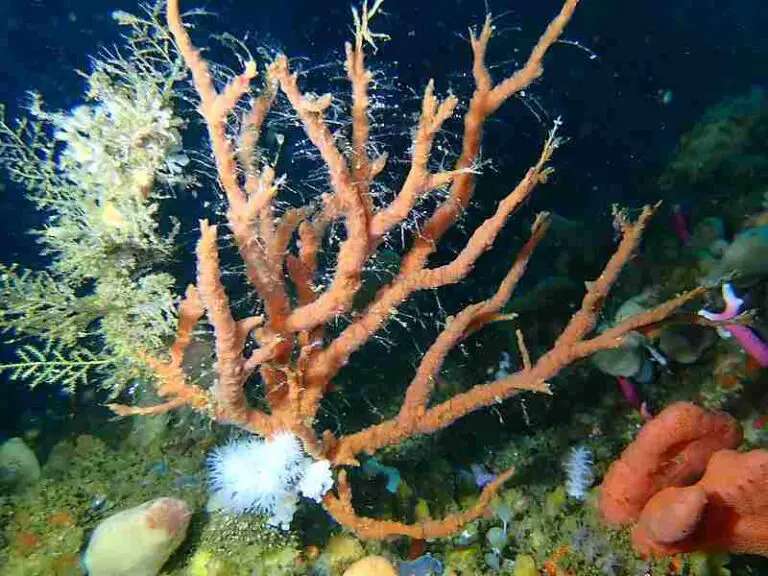What Does The Amazon Rainforest Provide? 10 Resources Discussed
The Amazon Rainforest provides food resources, water, timber, mineral deposits, natural medicines, oxygen, tourist destinations, local economic opportunities, scientific information, and climate stabilization services. This article gives a detailed answer to the question; what does the Amazon Rainforest provide? as follows;
1). Food Resources
The Amazon Rainforest, often referred to as the "lungs of the Earth," is renowned for its rich biodiversity and vast array of resources, which include those related to food production.
This lush ecosystem provides a wide range of food resources, many of which are important to both local communities and global society. Production and importance of food resources from the Amazon Rainforest are discussed in this section.
Production of Food Resources in the Amazon Rainforest
Food resources provided by the Amazon Rainforest include fruits, nuts, fish, crops like cassava, and animal protein/biomass.
The Amazon is home to a staggering diversity of fruit and nut-bearing trees. Some of the most famous include Brazil nuts, acai berries, guava, and maracuya (passion fruit). These fruits and nuts are not only consumed locally but are also exported globally.

The Amazon River and its tributaries are teeming with fish species, making it one of the world's most significant sources of freshwater fish. The pirarucu (or arapaima), tambaqui, and various catfish species are just a few examples of the Amazon's prized fish.
Manioc (cassava) is a staple crop in the Amazon region, particularly in Brazil. It is a versatile root vegetable used to make various food products, including cassava flour, tapioca pearls, and traditional dishes like farofa.
In addition to the it's natural bounty, the Amazon rainforest is productive as a site of agroforestry.
Indigenous and local communities cultivate crops like plantains, bananas, maize, and yams in clearings within the forest. Slash-and-burn agriculture, while posing ecological challenges, has been practiced for several centuries to grow these crops in the region.
Also, indigenous communities in the Amazon rely on hunting for protein. Game animals such as tapirs and peccaries; are often hunted sustainably.
Importance of Food Resources from the Amazon Rainforest
Food resources from the Amazon Rainforest are important for their nutritional value, economic viability, traditional and cultural significance, role in mitigating local food insecurity, as well as medicinal value.
The Amazon's food resources contribute significantly to meeting the nutritional needs of both local and global populations. Fruits like acai berries are rich in antioxidants, vitamins, and fiber, promoting health and well-being.
Exports of Amazonian food products, including Brazil nuts, acai, and fish, generate income for local communities and national economies. These products are in high demand internationally.
Several indigenous cultures have deep-rooted connections to the foods of the rainforest. Traditional Amazonian dishes and food preparation methods have cultural and spiritual significance.
Sustainable harvesting of food resources from the forest can serve as an economic incentive for its conservation. Local communities are more likely to protect the forest when they see its value in providing sustenance.
The Amazon contributes to global food security by supplying food products that are consumed both locally and beyond. These resources help diversify the global food supply, reducing dependence on a limited number of staple crops.
Also, many plants and fruits from the Amazon have medicinal properties and are used in traditional healing practices. Indigenous knowledge of these resources is invaluable.
Sustainable harvest practices of animals and plants in the Amazon can help to maintain ecological balance by preventing overpopulation of certain species and promoting biodiversity.
While the Amazon Rainforest's food resources are essential for both local communities and the world, there are challenges associated with their sustainable use. Deforestation, habitat destruction, and unsustainable hunting and harvesting practices can all threaten the availability of these valuable resources.
Conservation efforts, sustainable management practices, and respect for indigenous rights and traditional knowledge are vital to ensuring that the Amazon's food resources continue to benefit society while preserving this globally significant ecosystem.
*How We Can Protect the Amazon Rainforest
Protecting the Amazon Rainforest is important due to its ecological, cultural, and global significance. We can protect the Amazon Rainforest through various strategies and actions such as the enforcement of environmental laws, support for indigenous rights, promotion of sustainable logging, conservation of resources, reforestation, as well as afforestation of adjacent areas, provision of economic alternatives; global cooperation, consumer awareness, local monitoring programs;
Governments of Amazonian countries can rigorously enforce environmental laws and regulations to prevent illegal logging, mining, and land clearing. Strong penalties for lawbreakers can act as a deterrent.
Recognition and respect for the land and resource rights of indigenous and local communities can help protect the Amazon. Indigenous peoples have a long history of sustainable resource management and can play a key role in protecting the rainforest.
Implementation of sustainable logging practices that minimize environmental impacts is another applicable strategy. Certification systems like FSC (Forest Stewardship Council) can help identify sustainably harvested wood products.
Establishment and expansion of protected areas and conservation reserves in the Amazon, can protect areas that provide critical habitat for biodiversity and serve as carbon sinks.
Invest in large-scale reforestation efforts to restore degraded areas of the rainforest. Reforestation can help offset deforestation and support biodiversity.
Provide local communities with sustainable economic alternatives to activities like logging and mining. This can include supporting eco-tourism, sustainable agriculture, and non-timber forest product harvesting.
Encourage international cooperation and partnerships to combat deforestation. Programs like REDD+ (Reducing Emissions from Deforestation and Forest Degradation) aim to provide financial incentives for forest conservation.
Raise awareness among consumers about the impact of their choices on the rainforest. Support products made from sustainable Amazonian resources.
Many indigenous communities have established "guardian" programs to monitor and protect their lands. Supporting these initiatives in the Amazon can help prevent illegal activities that cause environmental degradation.
Invest in research and monitoring efforts to better understand the rainforest's ecosystems, biodiversity, and climate impacts. This knowledge is essential for informed conservation strategies.
Recognize the Amazon's role in mitigating climate change. Global efforts to reduce greenhouse gas emissions can indirectly protect the rainforest by reducing climate-related threats.
Promote education and awareness about the importance of the Amazon among the public, policymakers, and the media. A well-informed society is more likely to support conservation efforts.
Encourage international pressure on countries that contribute to deforestation in the Amazon. Diplomatic efforts and economic incentives can be leveraged to promote responsible practices.
Utilize technology such as satellite monitoring, drones, and data analysis to detect and respond to illegal activities in real-time.
NGOs, activists, and concerned citizens can advocate for policy changes, increased funding for conservation, and stricter regulations on industries that contribute to deforestation.
2). Water
Water is one of the invaluable resources provided by the Amazon Rainforest, and its production and role in society are multifaceted and critical.
Provision of Water by the Amazon Rainforest
The Amazon Rainforest is often referred to as the "lungs of the Earth" because it plays a crucial role in the planet's carbon sequestration, photosynthetic oxygen cycling, and hydrological processes.
The forest absorbs vast amounts of solar energy, which drives the process of evapotranspiration, where water evaporates from the leaves of plants and is released into the atmosphere.
This moisture-laden air contributes to the formation of rain clouds, leading to regular and abundant rainfall in the Amazon basin. Such forest-facilitated hydrological cycling helps sustain the region's vegetation and rivers.
In terms of hydrological resources, the Amazon Rainforest is home to the world's largest river system, which includes the Amazon River itself and thousands of tributaries. These rivers supply freshwater to the region and its surrounding areas.
Lastly, the Amazon's diverse aquatic ecosystems, including rivers, wetlands, streams, lakes and ponds, support a rich variety of aquatic life and provide livelihoods for many local communities.

How the Hydrological Processes of the Amazon Rainforest Influence Climatic, Ecologic and Socioeconomic Conditions
1). Climatic Influence
The abundant moisture from the rainforest helps to regulate local climates, thereby maintaining stable temperatures and humidity levels. This is essential for both the ecosystem and local human populations. Amazon's role in the global carbon and water cycles influences weather patterns and climate regulation far beyond its borders.
2). Ecologic Influence
Water resources in the Amazon are crucial to the survival of countless species of plants and animals. Many species depend on the rivers and wetlands for foraging, breeding, and shelter.
Aquatic ecosystems in the Amazon Rainforest are very effective contributors to the forest food chain. Fish and other aquatic species provide sustenance for both wildlife and local communities.
3). Socioeconomic Influence
Millions of people who live in and around the Amazon basin rely on its rivers (and aquifers) for drinking water, cooking, and sanitation.
Local agriculture often relies on seasonal patterns of flooding in the Amazon basin, which provide fertile soils and water for crops.
The Amazon's water bodies also support a viable fishing industry, providing livelihoods for many people and contributing to the regional economy.
Rivers like the Amazon and its tributaries are essential for transportation and commerce, connecting remote communities to larger towns and cities.
The rich plant biodiversity of the Amazon Rainforest, supported by the availability of water, has contributed to the development of many medicines used by indigenous and local communities. Also, water bodies in the Amazon are involved in various traditional practices, ceremonies, and rituals of indigenous groups.
Amazon Rainforest's water cycle contributes to the absorption and storage of carbon dioxide (CO2) from the atmosphere. This helps mitigate climate change by reducing the concentration of greenhouse gases.
3). Timber
The Amazon Rainforest is a significant source of timber among other forest products, and contributes to local economies and international trade.
Timber production in the Amazon primarily involves the felling or extraction of various tree species for commercial purposes. This section provides an overview of how timber is produced in the Amazon, and its importance to society.
Production of Timber in the Amazon Rainforest
Production of timber in the Amazon can be analyzed in terms of viable tree species, logging operations, processing and export. These factors are all highlighted in the outline below;
The Amazon Rainforest is home to an immense variety of tree species, many of which are sought after for their valuable wood. These species include mahogany, teak, ipe, and cedar, among others.
Timber extraction in the Amazon involves logging operations that can be broadly categorized into two methods, namely selective logging, and clearcutting. Each is further highlighted as follows;
Selective logging method targets specific high-value tree species while leaving the surrounding forest relatively intact. It aims to minimize ecological disruption and achieve sustainability in the exploitation of timber resources.
Clearcutting involves the removal of entire sections of the forest, which is a more disruptive, potentially harmful and controversial practice. It often leads to severe deforestation and habitat destruction.
After trees are felled, they are typically transported to sawmills for processing. Logs are cut into plywood or other usable wood products, which are then either sold domestically or exported to international markets.
Importance of Timber from the Amazon Rainforest
The importance of timber from the Amazon Rainforest can be analyzed in terms of its economic value for both international and domestic uses, as well as its role in the sustenance of the forest structure.
Timber extraction provides income and employment opportunities for local communities in the Amazon basin, contributing to their livelihoods and regional economies.
Amazonian timber is exported to markets worldwide, making it an important commodity in the global timber industry. It is used in construction, furniture production, and various other manufacturing sectors. Locally harvested timber is used for constructing houses, boats, tools, and other essential items in communities throughout the Amazon region.
Sustainable logging practices, such as selective logging, can be environmentally friendly and help protect the forest's biodiversity by minimizing habitat disruption.
Challenges and Concerns Linked to Timber Resources of the Amazon
Extraction of timber resourced is one of the reasons why the Amazon Rainforest is in danger of degradation and collapse. Socioeconomic and environmental issues associated with timber resources in the Amazon include; deforestation, illegal logging, and climate change.
Unsustainable logging practices, especially clearcutting, can lead to extensive deforestation, habitat loss, and ecosystem degradation.
Illegal logging is a widespread issue in the Amazon Rainforest, often associated with environmental destruction, land conflicts, and criminal activities. Timber extraction can have a significant ecological and environmental impact, including severe soil erosion, disruption of water cycles, and damage to wildlife habitats.
Deforestation and logging release carbon stored in trees, contributing to greenhouse gas emissions and climate change.
Conservation and Sustainable Management
Efforts are underway to promote sustainable logging practices and conservation in the Amazon Rainforest, including certified timber harvesting, areal protection, enforcement of indigenous land rights, and monitoring.
Organizations like the Forest Stewardship Council (FSC) provide certification for sustainably harvested timber, helping consumers make responsible choices.
Establishing protected areas and reserves in the Amazon helps conserve valuable ecosystems and restrict logging activities. Recognizing and upholding the land rights of indigenous communities can play a crucial role in sustainable forest management.
Advancements in remote sensing and monitoring technology aid in tracking and regulating logging activities, reducing illegal logging.
4). Mineral Deposits
The Amazon Rainforest is not only rich in biodiversity and timber, but also contains significant mineral deposits beneath its dense vegetation. These mineral resources have attracted attention due to their potential economic value. An overview of mineral deposits in the Amazon Rainforest, how they are produced, and their importance to society, is provided in this section.
Production and Exploitation of Mineral Deposits in the Amazon
The formation of mineral deposits in the Amazon Rainforest is a result of geological processes that have occurred over millions of years. These processes involve the deposition, weathering, and concentration of minerals within the Earth's crust.
Mineral extraction in the Amazon typically involves mining operations. These operations can vary widely, from small-scale artisanal mining to large-scale industrial operations. Commonly mined minerals include gold, bauxite, iron ore, cassiterite, and copper.
Various techniques are employed for mining, such as open-pit mining, underground mining, and alluvial mining, depending on the type and location of the mineral deposit.
Importance of Mineral Deposits from the Amazon Rainforest
The importance of mineral resources from the Amazon Rainforest can be analyzed in terms of their roles in economic development, and industrial processes.
Mineral resources are instrumental in the economic development of regions surrounding the Amazon Rainforest. Revenue generated from mining contributes to national economies through taxes, royalties, and job creation. Several of the minerals extracted from the Amazon are exported to international markets, generating foreign exchange earnings for countries in the region.
Mined minerals, such as bauxite for aluminum production and iron ore for steel manufacturing, are essential raw materials for various industrial sectors worldwide.
Artisanal and small-scale mining (ASM) activities, while unfavorable to the ecosystem, still provide livelihoods for many local communities in the Amazon, offering income opportunities to those who may lack access to alternative means of sustenance.

Mining projects can lead to the construction of infrastructure like roads, railways, and ports, which can benefit local communities and improve regional connectivity, while fostering urbanization.
Challenges and Concerns Linked to Mining in the Amazon
Mining activities can result in deforestation, habitat destruction, and environmental pollution, thereby negatively affecting the Amazon's fragile ecosystems and biodiversity.
Areas where mining occurs include within or near indigenous territories. In such areas, these activities often lead to resource-allocation conflicts and violations of the rights of indigenous peoples who depend on these lands. Generally, illicit mining operations, often characterized by poor environmental practices and human rights abuses, pose a significant challenge in the Amazon.
Deforestation associated with mining releases carbon stored in trees, contributing to greenhouse gas emissions and climate change.
Conservation and Sustainable Management of Minerals and Other Resources in the Amazon
Efforts to address the challenges associated with mineral extraction in the Amazon Rainforest include the enforcement of environmental regulations, protection of most vulnerable areas, certification of mining entities, and technological innovation.
The enforcement of environmental regulations and sustainable mining practices aims to reduce the negative environmental impact of mining operations.
Establishing protected areas and conservation zones can help safeguard critical habitats and limit mining activities in ecologically sensitive areas. Recognizing and respecting the land and resource rights of indigenous communities can mitigate conflicts and promote sustainable land use practices.
Initiatives like the Fairmined and Fair Trade certifications seek to promote ethical and responsible mining practices, especially in artisanal and small-scale mining sectors. The development and adoption of environmentally friendly mining technologies can help reduce the ecological footprint of these mining operations.
5). Natural Medicines
The Amazon Rainforest is often referred to as the "world's pharmacy" due to its incredible biodiversity, which includes a vast array of plant and animal species that have been used by indigenous communities for generations to treat various medical conditions. This section overviews natural medicines produced by the Amazon Rainforest, how they are sourced, and their importance to society.
Production of Natural Medicines in/by the Amazon Rainforest
The Amazon Rainforest is home to about 10% of the world's known species. Many of these species, including plants, trees, insects, and amphibians, possess (or at least are believed to possess) medicinal properties.
Indigenous communities living in the Amazon have developed extensive knowledge of the medicinal properties of local flora and fauna through centuries of observation and experimentation.
Natural medicines are typically derived from plant materials like leaves, roots, bark, and fruits. These materials are harvested sustainably by indigenous people or local communities.
After harvesting, the plant materials may be processed in various ways, such as drying, grinding, or boiling, to extract the active compounds used for medicinal purposes.
Traditional healers, often referred to as shamans or curanderos, are conversant with the diagnosis of illnesses and administration of natural remedies based on their ancestral knowledge.

Importance of Natural Medicines from the Amazon Rainforest
Natural medicines from the Amazon Rainforest are important for their cultural heritage, medical benefits, contributions to corporate pharmacy and sustainable healthcare. These areas of importance are addressed further below;
The traditional use of natural medicines is deeply ingrained in the cultural practices and identities of indigenous communities in the Amazon. These remedies are often passed down through generations.
Many natural medicines from the Amazon have been found to have scientifically validated therapeutic properties. They are used to treat a wide range of conditions, including infections, digestive disorders, skin ailments, and pain.
The Amazon Rainforest has been a source of inspiration and corroboration for pharmaceutical research. Active compounds from rainforest plants have been used as the basis for developing drugs for conditions such as malaria, cancer, and pain management.
Natural medicines offer a sustainable and accessible healthcare solution for many communities in remote Amazonian regions who may lack access to modern healthcare facilities.
The economic value of natural medicines can incentivize the conservation of rainforest ecosystems, as preserving biodiversity is essential for ensuring a continued supply of medicinal plants.
Challenges and Concerns of Amazonian Natural Medicines
Challenges and concerns associated with natural medicines from the Amazon include overharvesting, biopiracy, loss of traditional knowledge, and deforestation.
Unsustainable harvesting of medicinal plants can lead to the depletion of certain species and disrupt local ecosystems. The commercial exploitation of natural medicines by pharmaceutical companies without fair compensation or benefit-sharing agreements with indigenous communities has also raised ethical concerns.
As younger generations move away from traditional lifestyles, there is a risk of losing valuable knowledge about natural medicines and their preparation.
Lastly, widespread deforestation in the Amazon poses a direct threat to the habitats of many medicinal plant species.
Efforts to address these challenges include; sustainable harvesting, intellectual property rights enforcement, community-based initiatives, and conservation efforts.
6). Oxygen
The Amazon Rainforest is critical in the production of oxygen, a vital resource for all life on our planet.
Production of Oxygen in/by the Amazon Rainforest
Oxygen is produced in the Amazon Rainforest through processes like photosynthesis, carbon dioxide absorption, and biomass formation.
Photosynthesis is the process by which oxygen is primarily produced. It occurs in plants, including the vast array of trees, shrubs, and ground-level angiosperms found in the Amazon Rainforest.
During photosynthesis, plants absorb carbon dioxide (CO2) from the atmosphere and convert it into oxygen (O2) and glucose through the action of light from the sun. This oxygen is then released into the atmosphere. The Amazon Rainforest is home to hundreds of billions of individual trees, making it one of the most significant carbon sinks globally. These trees collectively contribute to the production of a substantial amount of oxygen.
Importance, Threats and Protection of Oxygen from the Amazon Rainforest
Oxygen produced by the Amazon Rainforest is important for its contribution to global oxygen supplies, human respiratory health, climate regulation, and biodiversity support.
Threats to oxygen production in the Amazon include; deforestation, climate change, and forest fires.
Efforts to protect the Amazon Rainforest and its oxygen-producing capacity include; areal conservation, climate change mitigation, and other sustainable practices.
7). Tourist Destination(s)
The Amazon Rainforest is not only a vital ecological resource, but can also serve as a unique and captivating tourist destination.
How/Why the Amazon Rainforest Provides a Viable Tourist Destination
Attributes of the Amazon Rainforest that make it a viable attraction for tourists include its unique biodiversity, cultural heritage, adventure opportunities, scientific and educational value.
The Amazon Rainforest is known for its species richness. It is host to a staggering array of wildlife, including exotic species like jaguars, macaws, and pink river dolphins. This biodiversity attracts nature enthusiasts, researchers, and wildlife photographers.
Indigenous communities have inhabited the Amazon for centuries, preserving their rich cultural traditions. Visitors can experience indigenous culture, learn about traditional practices, and purchase authentic handcrafted goods.
The Amazon also offers adventure seekers a variety of activities, such as jungle trekking, river cruises, kayaking, and zip-lining, providing adrenaline-pumping experiences in a breathtaking natural setting.
Lastly, the Amazon's scientific importance draws researchers and students from around the world. Its ecosystems hold clues to understanding biodiversity, climate change, and sustainable resource management.
Importance and Challenges of the Amazon Rainforest as a Tourist Destination
The Amazon is important as a tourist destination due to its economic contribution, conservation support, and contribution to cultural exchange as well as environmental awareness.
Challenges and considerations related to tourism in the Amazon Rainforest include; environmental impacts, cultural sensitivity, climate change and infrastructure development.
Efforts to promote sustainable tourism in the Amazon Rainforest include the use of eco-lodges, community-based tourism, educational tourism, and areal protection.
8). Local Economic Opportunities
The Amazon Rainforest not only represents a global ecological treasure but also a source of local economic opportunities. This section delves into how the Amazon Rainforest generates economic prospects for local communities, and its significance to society.
Production of Local Economic Opportunities
Economic opportunities provided by the Amazon Rainforest range from logging to non-timber forest products (NTFPs), agriculture, eco-tourism; and various traditional crafts.
As earlier stated; Amazon Rainforest is rich in valuable timber species such as mahogany and teak. Sustainable logging practices, such as selective logging and certified forestry, provide local employment and income while preserving forest health.
Non-Timber Forest Products (NTFPs) from the rainforest are several, including fruits, nuts, resins, and medicinal plants. Harvesting and selling these products offer income for local communities.
Also, indigenous and local communities practice subsistence and small-scale agriculture within the rainforest. They cultivate crops like cassava, plantains, and cocoa for both sustenance and trade.
The Amazon's natural beauty and biodiversity attract tourists, leading to the development of eco-lodges, guided tours, and cultural experiences, all of which create jobs and income for local guides, artisans, and service providers.
Lastly, indigenous communities produce traditional crafts like handwoven baskets, pottery, and jewelry. These products are sold locally and often reach national and international markets.

Importance of Local Economic Opportunities from the Amazon Rainforest
Local economic opportunities created by the Amazon Rainforest are beneficial for livelihood support, cultural preservation, diversification of income streams, and as an incentive for ecosystem conservation.
Economic activities in the Amazon provide income and employment for local communities, reducing dependency on external sources and contributing to poverty alleviation.
Local economic opportunities enable indigenous communities to maintain their traditional lifestyles and cultural heritage, passing down knowledge and practices to younger generations.
When local communities benefit economically from the rainforest, they have a vested interest in its conservation, acting as stewards of their natural environment.
A variety of income sources, including timber, NTFPs, agriculture, and tourism, help diversify local economies, reducing vulnerability to economic fluctuations.
Sustainable forestry and agriculture promote responsible resource management, ensuring that the Amazon's natural resources remain available for future generations.
9). Scientific Information
The Amazon Rainforest serves as a wellspring of invaluable scientific information that has far-reaching implications for various fields of study. This section explores how the rainforest generates scientific knowledge and its significance to society.
Production of Scientific Information by the Amazon Rainforest
Scientific information that can be gained from studying the Amazon, can be beneficial in many spheres; including biodiversity research, pharmacy; climatic studies; anthropology and ethnobotany.
Scientists study the remarkable biodiversity of the Amazon Rainforest for various purposes; including; cataloging new species, understanding ecological interactions, and exploring genetic diversity.
Indigenous peoples in the Amazon have a profound understanding of the rainforest's medicinal plants. Scientific research on these plants contributes to the development of new drugs and treatments.
The Amazon is critical to the Earth's climatic system, as it influences rainfall patterns and carbon cycling. Climate scientists study the rainforest to better understand climate change and its impacts.
Research in the Amazon informs conservation strategies for protecting endangered species and preserving critical habitats.
Lastly, indigenous cultures in the Amazon possess traditional knowledge of plants, animals, and ecosystems. Ethnobotanists and anthropologists work with indigenous communities to document and analyze this knowledge.
Importance of Scientific Information from the Amazon
Scientific information from the Amazon is important for its instrumentality in areas such as biodiversity conservation, pharmaceutical discovery, climate change mitigation, cultural preservation and scientific advancement.
10). Climate Stabilization
The Amazon Rainforest is a critical resource for climate stabilization, playing a pivotal role in regulating global climate patterns. This section discussed how the Amazon Rainforest stabilizes the climate, and its profound importance to society.
Role of the Amazon Rainforest in Climate Stabilization
The Amazon Rainforest stabilizes climatic conditions through carbon sequestration, transpiration, albedo effect, and vapor redistribution.
Amazon Rainforest acts as a massive carbon sink, which captures and stores vast amounts of carbon dioxide (CO2) from the atmosphere through the process of photosynthesis. Trees and other types of forest vegetation capture CO2 during growth, transforming it into oxygen (O2) and organic matter, which is stored in plant biomass and soil.
Trees in the Amazon release water vapor through transpiration. This process not only affects local climate and precipitation patterns but also contributes to cloud formation, which has a cooling effect on the Earth's surface.
The vast canopy of the rainforest reflects sunlight and heat back into the atmosphere, which helps to regulate regional and global temperatures. This is known as the albedo effect.
Lastly, the Amazon functions as a "moisture pump," redistributing water vapor from the Atlantic Ocean to the western interior of South America. This rainfall sustains the forest and maintains regional climate stability.
Importance of Climate Stabilization by the Amazon
Climate stabilization by the Amazon Rainforest is important at local and global levels, for its contributions to biodiversity sustenance, agriculture, and hydrological cycling.
Conclusion
The Amazon Rainforest provides resources like;
1. Food Resources
2. Water
3. Timber
4. Mineral Deposits
5. Natural Medicines
6. Oxygen
7. Tourist Destination(s)
8. Local Economic Opportunities
9. Scientific Information
10. Climate Stabilization
